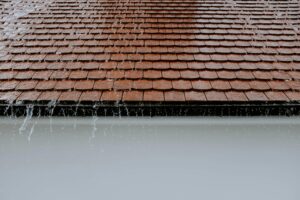Common Roof Ventilation Issues in Columbia, MD Homes
Roof ventilation plays a critical role in maintaining a comfortable and healthy living space in your Columbia, MD home. Proper attic ventilation ensures the effective circulation of air, preventing the build-up of moisture and excessive heat, which can contribute to the growth of mold, reduction of indoor air quality, and decreased energy efficiency. Despite its importance, roof ventilation issues are often overlooked and can lead to premature roofing material deterioration and costly repairs. In this article, we will discuss how to recognize common roof ventilation problems in your Columbia, MD home and the significance of addressing them to ensure a comfortable and energy-efficient living environment.
Attic ventilation systems typically consist of intake vents, such as soffit vents, and exhaust vents, like ridge vents or attic fans, working in tandem to maintain a balanced flow of air. Insufficient or improper ventilation can result in a myriad of issues, such as increased utility bills, ice dams in winter, and reduced lifespan of roofing materials. To maintain a healthy attic environment and avoid these problems, it is essential to periodically evaluate your roof’s ventilation system and take appropriate action.
By understanding the signs of ventilation issues and working with an experienced roofing contractor to remedy any deficiencies, you can prolong the life of your roof, enhance indoor air quality, and optimize energy efficiency in your Columbia, MD home, ensuring the well-being of your family and the durability of your most valuable investment.
1. Recognizing the Signs of Roof Ventilation Issues
To identify roof ventilation problems in your Columbia, MD home, watch for the following indicators:
– High indoor temperatures: If your living space consistently feels warmer than usual, especially during summer months, it may signify that your attic is trapping heat, impacting your home’s interior temperature.
– Excessive condensation: Moisture buildup on windows, walls, and ceilings can indicate insufficient ventilation, leading to increased humidity levels and potential mold growth.
– Ice dams and icicles: During winter, inadequate attic ventilation can cause ice dams and icicles to form along the edges of your roof, posing a risk for water damage and safety hazards.
– Curling or buckling shingles: A poorly ventilated attic can lead to extreme temperature fluctuations, causing your roofing materials to curl, buckle, or deteriorate prematurely.
– Mold or mildew growth: Inadequate airflow in your attic can result in a damp environment, encouraging the growth of mold and mildew, which can harm your home’s materials and pose health risks.
If you notice any of these signs, it is essential to consult a professional roofing contractor for an attic ventilation evaluation and possible improvements.
2. Understanding the Different Types of Roof Vents
A balanced attic ventilation system incorporates both intake and exhaust vents to maintain proper airflow. Understanding the various types of vents will help you determine the most suitable configuration for your home:
– Soffit vents: Installed under your roof’s eaves, soffit vents serve as intake vents, allowing fresh air to enter your attic and replace the stagnant air.
– Ridge vents: These vents run along the peak of your roof, serving as exhaust vents to release hot, moist air from your attic.
– Gable vents: Installed on the gable ends of your home, gable vents can serve as both intake and exhaust vents, depending on wind direction.
– Roof vents: Externally mounted on your roof, these vents allow hot air to escape from your attic and can be either passive vents or powered by an electric motor.
– Attic fans: These exhaust vents utilize an electric motor to actively expel hot air from your attic, promoting efficient airflow.
Consulting with a professional roofing contractor can help you determine the most effective combination of vents for your specific needs.
3. Strategies for Improving Roof Ventilation
If you detect roof ventilation problems in your Columbia, MD home, consider implementing the following strategies for improved attic airflow and overall home comfort:
– Increase attic insulation: Enhancing attic insulation can reduce heat transfer between your attic and living space, improving temperature regulation and energy efficiency.
– Add or upgrade vents: Depending on the type and size of your existing ventilation system, you may need to add or upgrade existing vents to improve airflow. A professional roofing contractor can assess your specific needs.
– Seal air leaks: Attic air leaks can cause warm interior air to mix with cold attic air, leading to condensation and potential moisture issues. Sealing air leaks can help maintain proper attic airflow and improve energy efficiency.
– Install an attic fan: An attic fan can actively promote airflow by expelling hot air and reducing the temperature in your attic, reducing the strain on your cooling system and conserving energy.
4. The Benefits of Proper Roof Ventilation
Addressing roof ventilation problems in your Columbia home can yield several long-term benefits, including:
– Roof durability: Proper ventilation reduces extreme temperature fluctuations and moisture buildup in your attic, prolonging the life of your roofing materials and protecting your investment.
– Air quality: Maintaining a well-ventilated attic reduces the risk of mold and mildew growth, which can adversely affect your home’s air quality and pose health risks for your family.
– Energy efficiency: A well-ventilated attic can contribute to your home’s overall energy efficiency by minimizing heat transfer and reducing the strain on your heating and cooling system.
– Ice dam prevention: Adequate attic ventilation can help prevent ice dams during winter by promoting a consistent roof temperature, minimizing the risk of water damage.
Protect Your Home with Proper Roof Ventilation
Identifying and addressing roof ventilation issues in your Columbia, MD home is vital for maintaining a comfortable, healthy living space, prolonging the life of your roof, and enhancing energy efficiency. By staying vigilant for signs of ventilation problems, understanding the different types of roof vents, and implementing strategies to improve attic airflow, you can safeguard your most valuable investment and enhance the well-being of your family.
Columbia Roofing provides expert advice and professional installation services to ensure proper attic ventilation in your home in Columbia, MD, and beyond. Trust our skilled team to help you maximize comfort and protect your property. Contact us today to schedule a ventilation evaluation and consultation.






